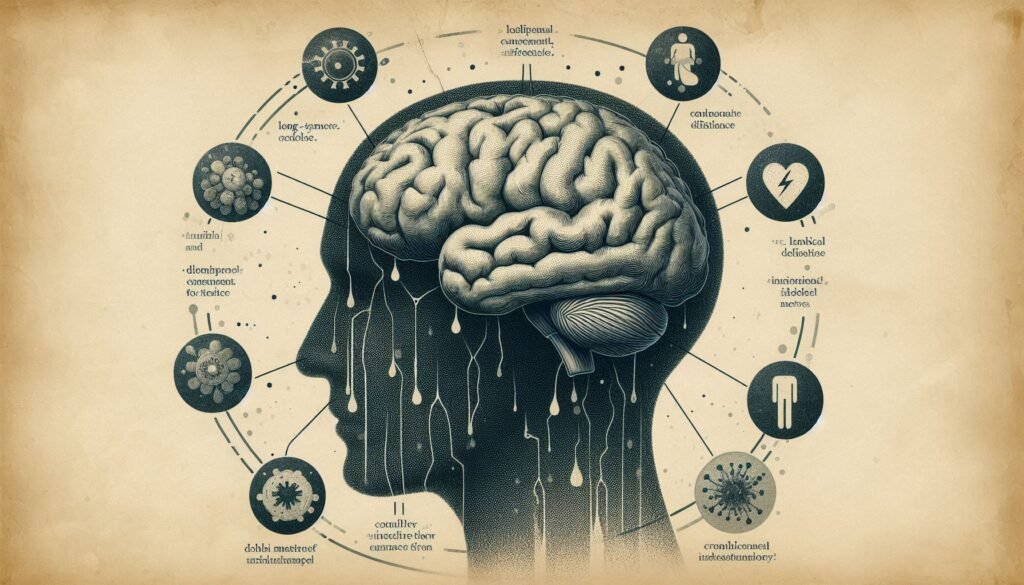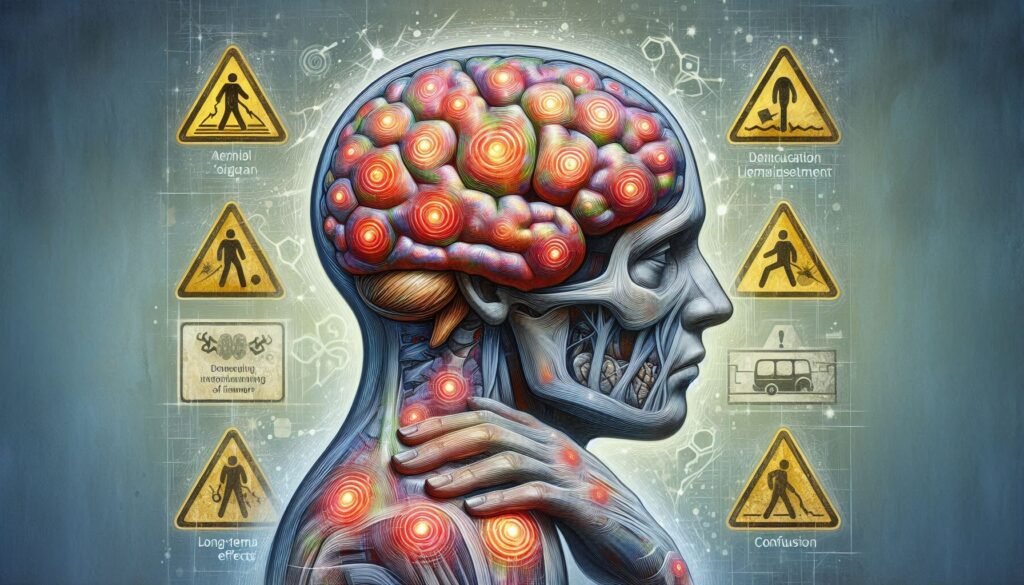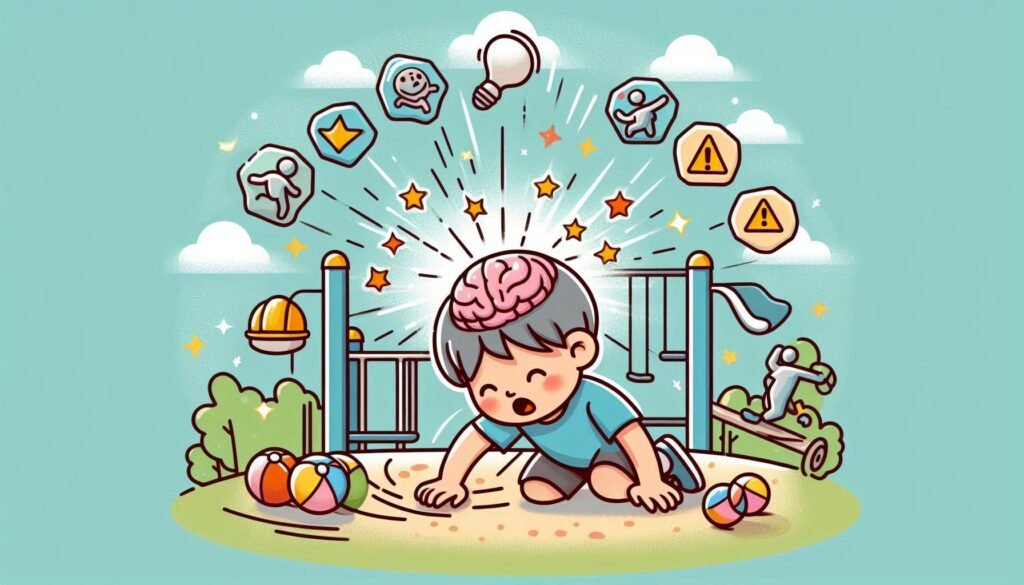Concussions are often seen as a rite of passage in contact sports and high-impact activities. However, the long-term effects of multiple concussions can be far more insidious than many realize. Each concussion adds to the cumulative impact on brain health, potentially leading to serious cognitive and emotional issues down the road. As awareness grows around this silent epidemic, understanding these risks becomes crucial for athletes, coaches, parents, and anyone involved in high-risk activities.
While it’s easy to brush off one or two incidents as minor setbacks, repeated head injuries may pave the way for chronic conditions that affect daily life significantly. From memory decline to behavioral changes and even neurodegenerative diseases like Chronic Traumatic Encephalopathy (CTE), the consequences extend well beyond the playing field.
Join us as we delve deeper into how multiple concussions can alter brain health over time and explore preventive strategies that could safeguard future generations against these alarming outcomes. Your knowledge is your best defense against this hidden danger.

The Cumulative Impact of Multiple Concussions on Brain Health
Repeated concussions can have a compounding effect on brain health, leading to significant long-term consequences. Each concussion disrupts normal brain function and can result in both immediate and lasting changes. The brain is resilient but not invincible; its ability to recover diminishes with each successive injury.
When multiple concussions occur, the risk of developing persistent post-concussion syndrome increases. Symptoms may involve headaches, dizziness, and cognitive difficulties that last far beyond the initial injury period. This prolonged recovery highlights how cumulative impacts can alter neural pathways over time.
Moreover, research suggests that each subsequent concussion can exacerbate inflammation within the brain. This heightened inflammatory response creates an environment conducive to further damage and impairment of cellular processes vital for healing.
The cumulative impact also means younger athletes are at greater risk since their brains are still developing. With ongoing exposure to head trauma, they may face irreversible changes that could affect various aspects of their lives well into adulthood. Understanding this growing concern is essential for safeguarding future athletes from unchecked risks associated with repeated concussive injuries.
Cognitive Decline and Memory Issues After Repeated Concussions
Cognitive decline is a significant concern for individuals who have experienced multiple concussions. Each concussion can disrupt normal brain function, leading to various cognitive deficits. Over time, these disruptions may accumulate, exacerbating the overall impact on mental capabilities.
Memory issues are especially prevalent among those with a history of repeated concussions. Individuals often report difficulties in recalling recent events or concentrating on tasks. These memory lapses can be frustrating and affect daily activities and interactions.
Research suggests that even mild traumatic brain injuries can lead to long-term changes in cognitive performance. This means that athletes or individuals exposed to contact sports face increased risks as they sustain more head injuries over their careers. The gradual erosion of cognitive function becomes apparent not just during intense activities but also in routine life.
Consequently, understanding the link between multiple concussions and cognitive decline is crucial for prevention efforts. Identifying symptoms early may help manage potential impacts before they significantly affect an individual’s quality of life.
Increased Risk of Neurodegenerative Diseases
Multiple concussions can significantly elevate the risk of developing neurodegenerative diseases later in life. Research indicates a strong correlation between repeated traumatic brain injuries and conditions such as Alzheimer’s disease, Parkinson’s disease, and amyotrophic lateral sclerosis (ALS). Each concussion can contribute to cumulative damage that may manifest years after the initial injuries.
The mechanisms behind this increased risk are complex. Repeated head trauma leads to inflammation, oxidative stress, and disruption of normal cellular processes within the brain. These changes create an environment conducive to neurodegeneration over time.
Moreover, individuals with a history of multiple concussions often exhibit abnormal protein accumulation in the brain—particularly tau proteins associated with Alzheimer’s. This buildup further complicates cognitive function and heightens vulnerability to other degenerative disorders.
Awareness is crucial for those at risk. Athletes in contact sports or individuals with high exposure should be particularly vigilant about their health following any head injury. Early intervention may play a vital role in mitigating long-term consequences linked to neurodegenerative diseases due to multiple concussions.
Emotional and Behavioral Changes in Multiple Concussion Patients
Multiple concussions can lead to significant emotional and behavioral changes. Individuals who have experienced repeated head injuries often report increased irritability, mood swings, and anxiety. These alterations can be distressing for both the affected individuals and their families.
Research indicates that brain trauma may disrupt neural pathways responsible for regulating emotions. This disruption can manifest as heightened sensitivity to stress or difficulty managing frustration. Some patients might find themselves feeling overwhelmed by situations that previously seemed manageable.
Additionally, social withdrawal is a common behavior observed in those suffering from multiple concussions. They may struggle with maintaining relationships due to feelings of isolation or fear of being misunderstood. As emotional responses become less stable, it can further alienate them from friends and loved ones.
Many concussion patients also experience impulsivity or aggression, which complicates everyday interactions. Thus, understanding these emotional shifts is crucial for providing appropriate support and intervention strategies tailored to individual needs.
Chronic Traumatic Encephalopathy (CTE): A Serious Long-Term Risk
Chronic Traumatic Encephalopathy (CTE) is a progressive brain condition linked to repeated head injuries, including multiple concussions. It has garnered significant attention in recent years due to its association with contact sports such as football and boxing. CTE can only be definitively diagnosed post-mortem, complicating efforts for early intervention.
Individuals with CTE often exhibit a range of symptoms that worsen over time. These may include memory loss, confusion, impaired judgment, and difficulty thinking clearly. Emotional issues like depression and anxiety are also common among those affected by this devastating condition.
The pathology of CTE involves abnormal protein deposits in the brain known as tau proteins. Over time, these deposits can disrupt normal brain function and lead to neurodegeneration. The presence of tau tangles is indicative of severe neurological decline.
Awareness about CTE continues to grow within both medical communities and the general public. As more athletes advocate for their health after retirement from sports, discussions surrounding prevention strategies have become essential in mitigating long-term effects associated with multiple concussions.
Impact on Quality of Life and Daily Functioning
The impact of multiple concussions extends well beyond physical symptoms. Individuals often experience significant changes in their quality of life and daily functioning. Cognitive difficulties can impede work performance, making it challenging to focus on tasks or retain information.
Social interactions may also suffer due to emotional instability or mood swings that arise following repeated head injuries. Friends and family members might find it difficult to understand the changes, leading to feelings of isolation for those affected. Engaging in social activities becomes daunting when anxiety or depression takes hold.
Physical limitations are common as well. Headaches, dizziness, and fatigue can hinder participation in everyday activities like exercising or even running errands. Simple chores may become overwhelming, adding another layer of frustration.
These challenges ripple into personal relationships too. As individuals struggle with their symptoms, they may withdraw from loved ones out of fear or embarrassment. This shift not only affects mental health but also strains familial bonds and friendships over time.
Neuroimaging Findings in Individuals with Multiple Concussions
Neuroimaging has become an essential tool in understanding the long-term effects of multiple concussions. Advanced techniques like MRI and PET scans provide valuable insights into structural and functional changes in the brain. These imaging methods help researchers identify abnormalities that may not be apparent through traditional assessments.
Studies have shown that individuals with a history of multiple concussions often exhibit altered brain structure, including reduced grey matter volume and white matter integrity. These changes can lead to cognitive deficits, impacting memory, attention, and processing speed. The evidence suggests that cumulative trauma can significantly affect how the brain functions over time.
Functional neuroimaging also reveals alterations in metabolic activity within specific brain regions associated with emotional regulation and executive function. This disruption might explain some behavioral issues seen in patients who have suffered numerous concussions.
Moreover, ongoing research continues to explore how these neuroimaging findings correlate with clinical outcomes such as mood disorders or cognitive decline. Understanding these connections is vital for developing effective interventions aimed at improving the quality of life for those affected by repeated head injuries.
Prevention Strategies for Athletes and High-Risk Populations
Preventing multiple concussions is crucial for athletes and others in high-risk environments. Education plays a vital role. Coaches, players, and parents should understand the signs of concussion and the importance of reporting symptoms immediately. Awareness can lead to quicker interventions.
Implementing proper protective gear is another key strategy. Helmets designed with advanced materials can help absorb impact during sports activities. However, no helmet can completely eliminate risk; therefore, consistent use of safety equipment is essential.
Moreover, promoting safe playing techniques reduces the likelihood of head injuries. Training programs that emphasize skill development—like tackling methods in football or heading techniques in soccer—can minimize dangerous situations on the field.
Regular health assessments are important for monitoring athlete well-being over time. Establishing protocols to evaluate an athlete’s mental and physical state ensures timely diagnosis if a concussion occurs. These strategies not only protect individual players but also contribute to overall team safety culture.
Current Research on Long-Term Effects and Potential Treatments
Current research on the long-term effects of multiple concussions is rapidly evolving. Scientists are investigating how repeated head injuries alter brain function over time and what that means for affected individuals. One area of focus is identifying biomarkers that could predict cognitive decline and neurodegenerative diseases in athletes or those at risk.
Researchers are also exploring potential treatments to mitigate damage caused by concussions. These studies include evaluating pharmacological interventions, lifestyle modifications, and rehabilitation strategies aimed at enhancing brain health post-injury. Emerging therapies targeting inflammation and promoting neurogenesis show promise as novel approaches.
Additionally, there’s a growing emphasis on improving diagnostic tools through advanced neuroimaging techniques like MRI functional scans. They help visualize changes in the brain associated with multiple concussions more clearly.
As our understanding deepens, it becomes increasingly crucial for athletes, coaches, and families to stay informed about these developments. Awareness can lead to better prevention measures and early intervention strategies that ultimately improve outcomes for those impacted by the long-term effects of multiple concussions.


